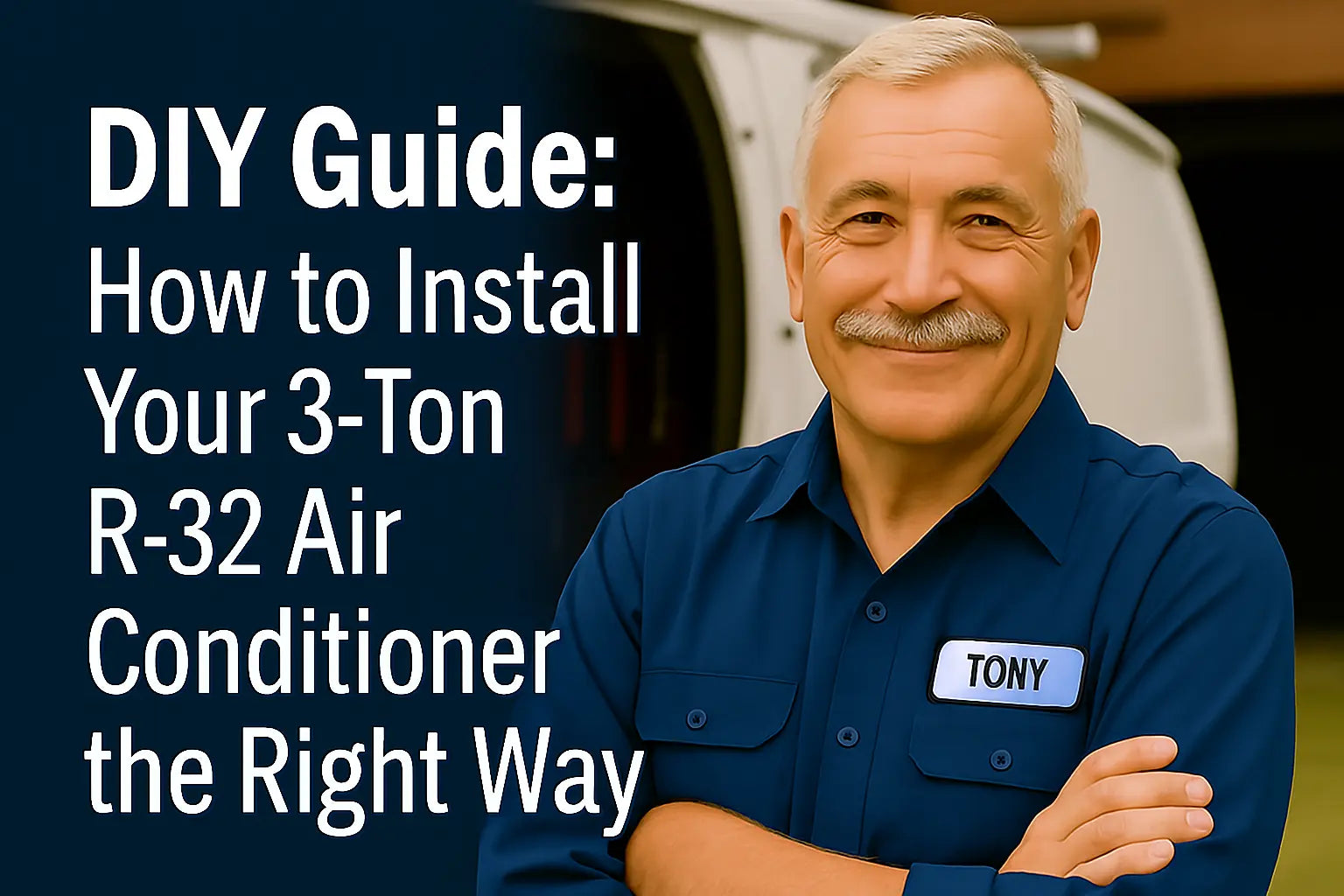Tony’s Hello: Ready to Roll Up Your Sleeves? 🛠️
Hey, Tony here. I’m all for DIY — nothing beats the satisfaction of fixing or installing something yourself. But I gotta be real with you: installing a 3-ton R-32 air conditioner isn’t like swapping out a lightbulb. This is serious equipment, with refrigerants that need special handling, electrical work that can be dangerous if done wrong, and tight tolerances that impact your system’s efficiency and lifespan.
If you’re planning to tackle this project yourself, this guide is for you. I’m breaking down every major step with tips I’ve learned over decades in the field, including when you absolutely need to call in a pro.
Let’s get to it.
Step 1: Gather Your Tools and Materials 🧰
Before you start, make sure you have everything ready:
-
Proper sized 3-ton R-32 condenser and matching indoor coil/air handler
-
Refrigerant charging kit designed for R-32 (A2L) refrigerant
-
Vacuum pump and manifold gauge set
-
Electrical tools: wire strippers, voltage tester, disconnect box
-
Copper tubing and flare tools
-
Level and measuring tape
-
Concrete pad or mounting base for outdoor unit
-
Safety gear: gloves, eye protection, and refrigerant-certified respirator if needed
Remember, handling R-32 refrigerant requires EPA Section 608 certification due to its mildly flammable nature. Check out the EPA’s guide on refrigerant handling before proceeding.
Step 2: Location, Location, Location 📍
Placement of your outdoor condenser makes a big difference:
-
Pick a shaded spot if possible, with plenty of airflow
-
Avoid locations near dryer vents or grill exhaust
-
Mount the condenser on a level, sturdy base—concrete pads are the standard
-
Ensure at least 2 feet clearance on all sides for proper airflow
This Energy.gov guide on air conditioner placement has some handy tips to optimize efficiency.
Step 3: Prepare the Site and Install the Pad 🧱
If there’s no existing pad, you’ll need to pour or place one:
-
Level the surface carefully
-
The pad should be at least 2 inches thick and extend about 12 inches beyond the condenser footprint on all sides
-
Secure the pad to prevent shifting or sinking over time
Step 4: Electrical Setup and Safety First ⚡
Your 3-ton unit will require a dedicated circuit with the correct breaker size — typically a 30-40 amp breaker, but check your manufacturer’s specs.
-
Install a disconnect box near the condenser for emergency shutoff
-
Always shut power at the breaker before wiring
-
Use appropriate gauge wire and conduit to meet local electrical codes
-
Test wiring with a voltage tester before connecting
For a deep dive into electrical requirements, this guide from Electrical Technology is a good resource.
Step 5: Connect Refrigerant Lines and Indoor Coil 🔧
This is the trickiest part:
-
Match the indoor coil or air handler model exactly with your condenser model
-
Carefully flare copper tubing and connect refrigerant lines — avoid kinks or leaks
-
Evacuate the lines with a vacuum pump for at least 30 minutes to remove moisture and air
-
Charge the system with the exact refrigerant weight specified by the manufacturer — no guessing!
R-32 requires special handling due to its flammability classification (A2L). If you’re not certified or comfortable with refrigerants, don’t skip calling a pro here.
Step 6: Install the Thermostat and Controls 🕹️
-
Choose a thermostat compatible with your HVAC system and your home’s needs
-
Install it on an interior wall away from drafts, direct sunlight, or heat sources
-
Connect the thermostat wiring following manufacturer instructions
Smart thermostats are great for energy savings and comfort. Check out models recommended by Energy Star for efficiency.
Step 7: Test Your System and Inspect 🔍
-
Turn on power and run the system through a full cooling cycle
-
Check for unusual noises, leaks, or error codes
-
Verify proper airflow at registers and consistent cooling in rooms
-
Measure refrigerant pressures with your gauge set to confirm correct charge
If anything feels off or you see signs of refrigerant leaks, shut it down and call a licensed HVAC technician immediately.
Step 8: Routine Maintenance You Should Know About 🧹
Even the best installs need upkeep:
-
Change filters every 1-3 months depending on use
-
Keep the condenser coil clean of leaves and debris
-
Inspect electrical connections yearly
-
Schedule professional tune-ups annually
Tony’s Final Thoughts: Do It Right, Stay Safe, Stay Cool 😎
Look, installing a 3-ton R-32 air conditioner isn’t a weekend garage project for most folks — but if you’re committed, prepared, and follow these steps, it’s doable with care.
Make sure you respect the electrical and refrigerant handling rules. Don’t take shortcuts on safety. And when in doubt, reach out to a certified pro who knows R-32 systems inside and out.
If you’re shopping for your system or need help finding a model that fits your home, check out the 3-ton R-32 air conditioner collection at The Furnace Outlet. I trust these units and would install them in my own house.
Having some trouble with your system? Visit my guide: Top 10 No-Nonsense Troubleshooting Tips for Your 3-Ton R-32 Air Conditioner.
Keep your head in the game, respect the tech, and you’ll have a system that keeps your home cool and comfortable for years.
- Tony, the Trusted Tech







